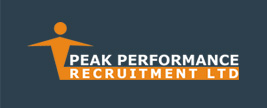
News
Chinese lessors on the global hunt
Thursday 6th October 2016
If anything reflected Chinese aircraft lessors’ appetite for a dominant role in the sector, it was Bohai Leasing’s consummation of the .6 billion deal to acquire 100% of Avolon. The Dublin-headquartered lessor is now fully owned by Shenzhen listed Bohai, which in turn is controlled by the HNA Group, a Fortune Global 500 group that also owns China’s largest private carrier, Hainan Airlines.
The true price of the acquisition was billion, after Avolon’s debt was included, and it was a landmark moment in the leasing industry.
It was the first time a Mainland controlled lessor had succeeded in taking over a western lessor. It followed the failed attempt by a Chinese consortium to buy the world’s largest lessor, ILFC, in 2012.
The Avolon purchase is set to take Bohai’s aircraft under management, including current and forthcoming fleet at its Hong Kong Aviation Capital and Changjiang Leasing subsidiaries, to 525 planes worth close to US billion at today’s prices.
At the time, Bohai’s chief operating officer, Ren Weidong, told media: “In the future, Chinese lessors will account for a larger share of the global leasing market, How we differ from other Chinese lessors is specialization internationalization.”
Weidong was right on the first count, but he was stretching a point to suggest Bohai differs from other Chinese lessors. His rivals too have set their sights on specialization and internationalization. Data provider, Dealogic, said Chinese buyers in the aircraft leasing sector made up 9.24 billion in outbound deals so far this year, compared with 5.71 billion for all of 2015.
London-based consultants and analysts, Ishka Global, said: “Building a Chinese presence in the (global) aircraft leasing industry is a stated long-term intention of the Chinese government. Bearing that in mind, the ‘new’ leasing companies have been making some smart strategic moves. They have bought readymade aircraft portfolios from a variety of sources, bought whole leasing companies; formed joint-ventures to leverage management experience and to test the various ways of operating in this sector.
Perhaps most importantly, they have been building relationships with the lessor community and with airlines. Whether they have bought the right assets, paid the right price or acquired the right credits/airlines in the right proportions will depend on how the market evolves.”
The drive by Chinese banks and other investors to put big money into leasing companies is hardly surprising because leasing a plane can be far more lucrative than flying one. Bloomberg says operating margins at AerCap Holdings, the world’s biggest listed lessor, averaged 34% in the last three years. The extravagant returns compare with 7.8% for the Bloomberg World Airlines Index.
In the last 30 years, aircraft owned by operating lessors worldwide has risen 11% annually. As a result, more than 40% of the world airline fleet is now leased.
It is certainly paying off, if the China Aircraft Leasing Group (CALC), the largest independent aircraft operating lessor in China, is any gauge. Its interim profit, to June 30, increased by 105.7% over the same period in 2015 and its leasing portfolio expanded to 70 airplanes.
In reality, aircraft leasing on a large scale is still in its embryonic stage in China. The sector only took off in 2007 when China’s financial regulator gave banks the green light to enter the sector. Development has been rapid.
Chinese financial institutions have ceaselessly encouraged their leasing subsidiaries and now have at least 80% of local market share. ICBC Leasing alone, owned by the Industrial and Commercial Bank of China, has enlarged its aircraft fleet by more than seven times, to around 450 aircraft, in the last seven years.
The leasing subsidiaries of the remaining “Big Four” Chinese banks - CCB Financial Leasing Corporation (China Construction Bank), ABC Financial Leasing Co. (Agricultural Bank of China) and BOC Aviation (Bank of China) – are actively seeking opportunities outside their home market for growth. Coming up behind them are important players like CDB Leasing Company and China Aircraft Leasing as well as very ambitious but smaller new lessors.
“Potential ‘larger’ lessor portfolios being offered for sale are gradually diminishing, although there are a few possible targets that could satisfy the growth requirements of all the Chinese-backed institutions,” the Ishka consultancy said.
Chinese success in the lessor sector has been helped by the constraints of the tougher capital requirements being imposed on western banks. Possible targets for Chinese buyers could be a subsidiary of North American insurer, Pacific Life Insurance, Aviation Capital Group. Private-equity group, Terra Firma Capital Partners, owns AWAS Aviation Capital. The leasing subsidiary reportedly has an aircraft portfolio valued at billion and has often been the subject of speculation about either being sold or listed.
Also in play is the U.S.-listed CIT Group and its billion aircraft leasing portfolio. Among those stalking the purchase are Bohai Leasing- controlled Avolon and China’s ICBC Leasing. At press time, the lessor world was waiting to hear who won the CIT lessor beauty parade.
Chinese lessors certainly have grand ambitions. The country’s largest domestic aircraft lessor, ICBC Financial Leasing (ICBCL), intends to double its fleet by delivering more than 300 aircraft to various customers by year end 2017.
Chinese lessors have big aircraft orders in place to cater for the expected demand at home and abroad for aircraft. It is forecast by analysts that lessors will supply almost 70% of the 6,000 plus planes expected to be delivered to Chinese airlines in the next 20 years.
At the same time, some western lessors forming partnerships with aviation companies in China. As recently as July, a Lithuanian lessor, AviaAM Leasing signed a joint venture with the Henan Civil Aviation Development and Investment Company (HNCA), to build and manage narrow-body aircraft worth of up to 0 million. Our partners at HNCA will provide access to favourable financing terms required for the JV’s fleet development,” said the chairman and chief executive of AviaAM, Tadas Goberis.
For investors, splashing out money on leasing companies rather than airlines is highly attractive. Bank of China-owned and Singapore-based BOC Aviation Ltd raised .1 billion from an initial public offering (IPO) in Hong Kong that was completed on June 1. his year, money it will use to but more planes. The IPO attracted 11 cornerstone investors, including Boeing, sovereign wealth fund China Investment Corp and the government of Singopore’s Temasek Holdings Fullerton Fund Management.
Now BOC Aviation Ltd, the lessor posted record net income of 3 million last year, one per cent more than a year earlier, with revenue up 10%, to .09 billion. In August, it announced an interim net profit of US2 million, a 24% increase over the same months in 2015. “Asia-Pacific is a growth market,” said CEO, Robert Martin. “The rise of the middle class is going to drive demand for travel. That is going to drive demand for aircraft.”
In the same month, China Aircraft Leasing Group Holdings Limited (CALC) announced its initial foray into Japan, a market dominated by local banks and fund managers as well as western investors with close ties to Japanese leasing companies. CALC signed an agreement with ANA Holdings for an A320 that will be subleased to the airline group’s budget carrier, Vanilla Air, with the aircraft scheduled for delivery to the carrier next August.
But analysts warn there are issues ahead in this broiling market. Chinese leasing firms eager to acquire established Western lessors in the wake of the Avolon buy out, could pay beyond premium levels for the lessors’ assets.
Potential risks include knowledgeable operation of leased aircraft and their condition, maintenance, registration, insurance, transition process and costs and associated residual values. “The delivery of a large number of aircraft from orders made by Chinese lessors and airlines after 2011 is due to peak by 2018,” said Ishka.
“While the lessors remain in a honeymoon period as aircraft run through their primary leases, those lessors who don’t possess the necessary expertise to tackle the aforementioned issues are going to face a turbulent ride and a steep learning curve,” it said.
But there is little doubt that Chinese lessors will play a bigger role in global aircraft leasing than they do today. Analysts forecast there will be more consolidation in the industry and more Western leasing companies up for sale in the next few years, Chinese lessors are expected to be at the head of the queue to snap up the best on offer.
Source : Orient Aviation
